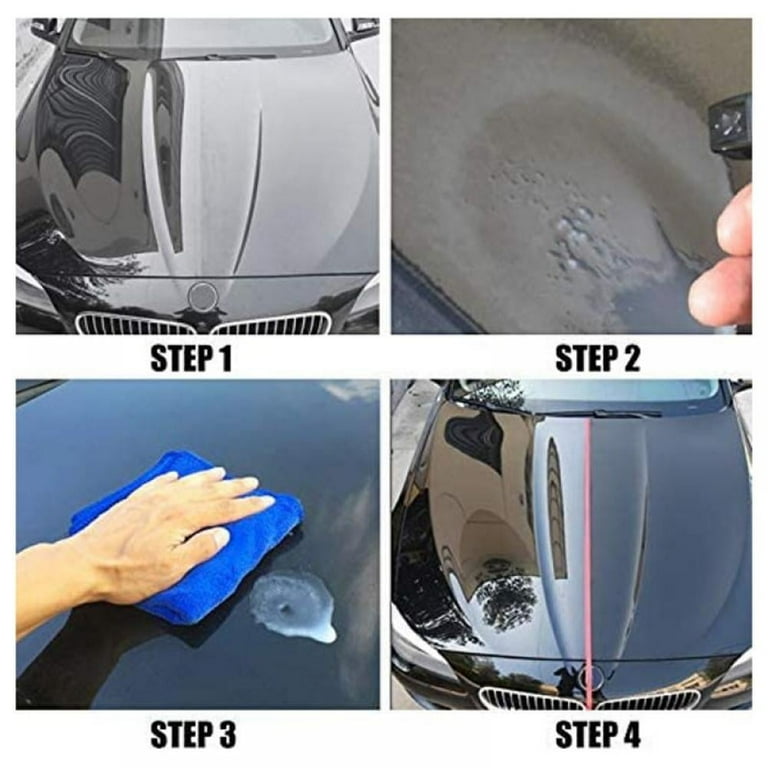The Ultimate Overview to Recognizing Car Ceramic Coating and Its Benefits
Car ceramic coating has actually emerged as an essential improvement in vehicle treatment, supplying a robust protective layer that improves both aesthetic appeals and durability. Comprehending the scientific research behind this innovation, particularly its composition and bonding devices, is crucial for any type of car owner considering this financial investment. Past simple gloss, the benefits reach useful maintenance and environmental management. However, a comprehensive examination discloses vital considerations when making a decision in between DIY application and specialist installation. What variables should you evaluate before making this choice? The effects might considerably affect your choice and the best security of your car.
What Is Ceramic Finishing?
Ceramic layer is a liquid polymer related to the outside surface areas of a car, using a sturdy protective layer that boosts both appearance and long life. Made up largely of silicon dioxide (SiO2), this advanced formulation develops a chemical bond with the lorry's paint, developing a resistant obstacle versus ecological impurities.
One of the primary advantages of ceramic finishing is its capability to push back water and dust, making upkeep significantly easier. The hydrophobic buildings of the layer reason water to grain up and roll off, taking dirt and crud with it. This not only keeps the car cleaner for longer periods but also lowers the frequency of cleans called for.
In addition, ceramic layers give considerable UV security, protecting against oxidation and fading of the paint with time. This quality is vital for preserving the car's visual allure and resale worth. Ceramic coverings can protect against small scratches and swirl marks, providing a degree of defense that standard waxes and sealers can not match.
Exactly How Ceramic Covering Functions

Upon curing, which can take a number of hours to days depending on the product, the covering sets into an adaptable, glass-like layer. This layer supplies an impenetrable barrier against impurities such as dirt, gunk, and toxic wastes - Davinci Detail Boat & Car Ceramic Coating. In addition, the ceramic finishing's hydrophobic residential or commercial properties make it possible for water to bead and roll off the surface, minimizing the accumulation of dirt and making cleaning dramatically simpler

Advantages of Ceramic Coating
The news application of ceramic finishes offers countless benefits that expand past simple aesthetic appeals. Ceramic finishings produce a hydrophobic surface, warding off dirt, water, and crud, which makes the automobile simpler to clean and preserve. Davinci Detail Boat & Car Ceramic Coating.
In addition, ceramic layers are resistant to chemicals and oxidation, protecting the vehicle from tree sap, bird droppings, and various other corrosive substances. This resistance aids preserve the honesty of the automobile's finish, inevitably extending its life expectancy and resale value.
In addition, ceramic finishings provide a shiny appearance that boosts the automobile's total appearance, providing it a showroom-quality shine. The long life of these finishings, often long-term a number of years with proper maintenance, additionally provides a cost-effective option contrasted to conventional shaving or sealants.
Last but not least, the simplicity of cleansing surfaces treated with ceramic finishings significantly minimizes the moment and effort spent on lorry upkeep. With these advantages, ceramic layers have ended up being a prominent selection for cars and truck enthusiasts and daily vehicle drivers alike.
DIY vs. Expert Application
Picking in between Do it yourself and expert application for ceramic finishings includes weighing numerous aspects, including skill degree, time dedication, and preferred results. It calls for a complete understanding of the application process, including surface area prep work, product option, and healing times.
On the other hand, professional application makes certain a high-grade surface and longevity. Specialists have the experience and specialized tools necessary to prepare the lorry and apply the coating appropriately. They can likewise attend to and identify surface area imperfections that might impact the layer's efficiency, which an inexperienced eye might overlook.
In addition, the moment commitment for a do it yourself project can be substantial, as appropriate application is labor-intensive and requires persistence to attain ideal outcomes. On the other hand, a specialist service commonly completes the work much more successfully, allowing you to take pleasure in the advantages of ceramic covering earlier. Inevitably, the decision needs to align with your comfort degree, budget, and the significance you position on accomplishing a remarkable coating.
Upkeep Tips for Ceramic Covering
Proper upkeep of ceramic finishing is essential to preserve its protective qualities and visual charm. Stay clear of automated auto cleans with rough brushes that can weaken the coating over time.
After cleaning, it is suggested to dry the car with a clean microfiber towel to avoid water areas. Additionally, consider performing a maintenance clean every few weeks, relying on ecological problems, to get rid of contaminants like dirt, bird droppings, and tree sap that can bond to the surface area.
Using a ceramic coating-specific booster or spray sealer can improve the finishing's hydrophobic properties and keep its gloss. It is likewise important to avoid using unpleasant cleansers or waxes that may compromise the coating's performance.
Finally, conduct routine examinations for any kind of indications of degradation or damages. A specialist detailer can evaluate the situation and recommend proper corrective actions if the finishing reveals indications of wear. Adhering to these maintenance pointers will ensure your ceramic finish remains efficient right here and maintains your car looking immaculate.

Verdict
To conclude, auto ceramic finishing offers as a sophisticated safety service for lorry exteriors, supplying significant benefits such as visit here boosted toughness, resistance to ecological pollutants, and streamlined upkeep. The application procedure, whether executed by professionals or as a do it yourself job, plays an important role in accomplishing optimum results. Normal maintenance additionally ensures the longevity and efficiency of the coating. Ultimately, ceramic finish gives a beneficial investment in maintaining the aesthetic and structural integrity of automobiles over time.
A ceramic coating works by using an intricate chemical procedure that involves bonding with the lorry's paint at a molecular degree. Ceramic layers develop a hydrophobic surface area, driving away dirt, crud, and water, which makes the automobile much easier to maintain and cleanse. Adhering to these upkeep ideas will ensure your ceramic covering remains reliable and maintains your car looking pristine.
In verdict, auto ceramic finishing offers as an advanced safety option for car outsides, using considerable advantages such as improved toughness, resistance to environmental contaminants, and streamlined maintenance. Inevitably, ceramic finishing provides a useful investment in maintaining the aesthetic and structural stability of vehicles over time.
 Danny Tamberelli Then & Now!
Danny Tamberelli Then & Now! Bradley Pierce Then & Now!
Bradley Pierce Then & Now! Michael Oliver Then & Now!
Michael Oliver Then & Now! Lynda Carter Then & Now!
Lynda Carter Then & Now! McKayla Maroney Then & Now!
McKayla Maroney Then & Now!